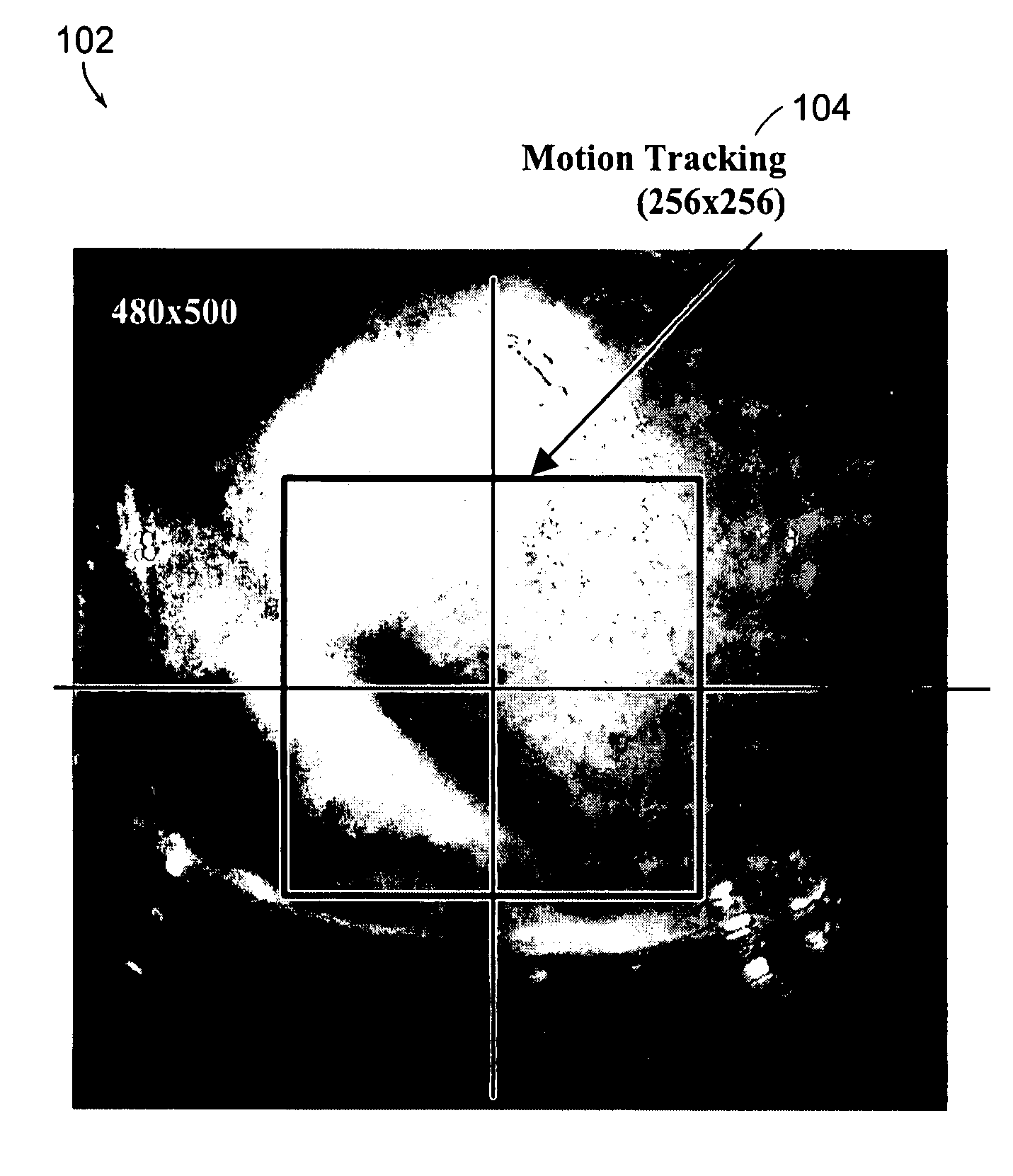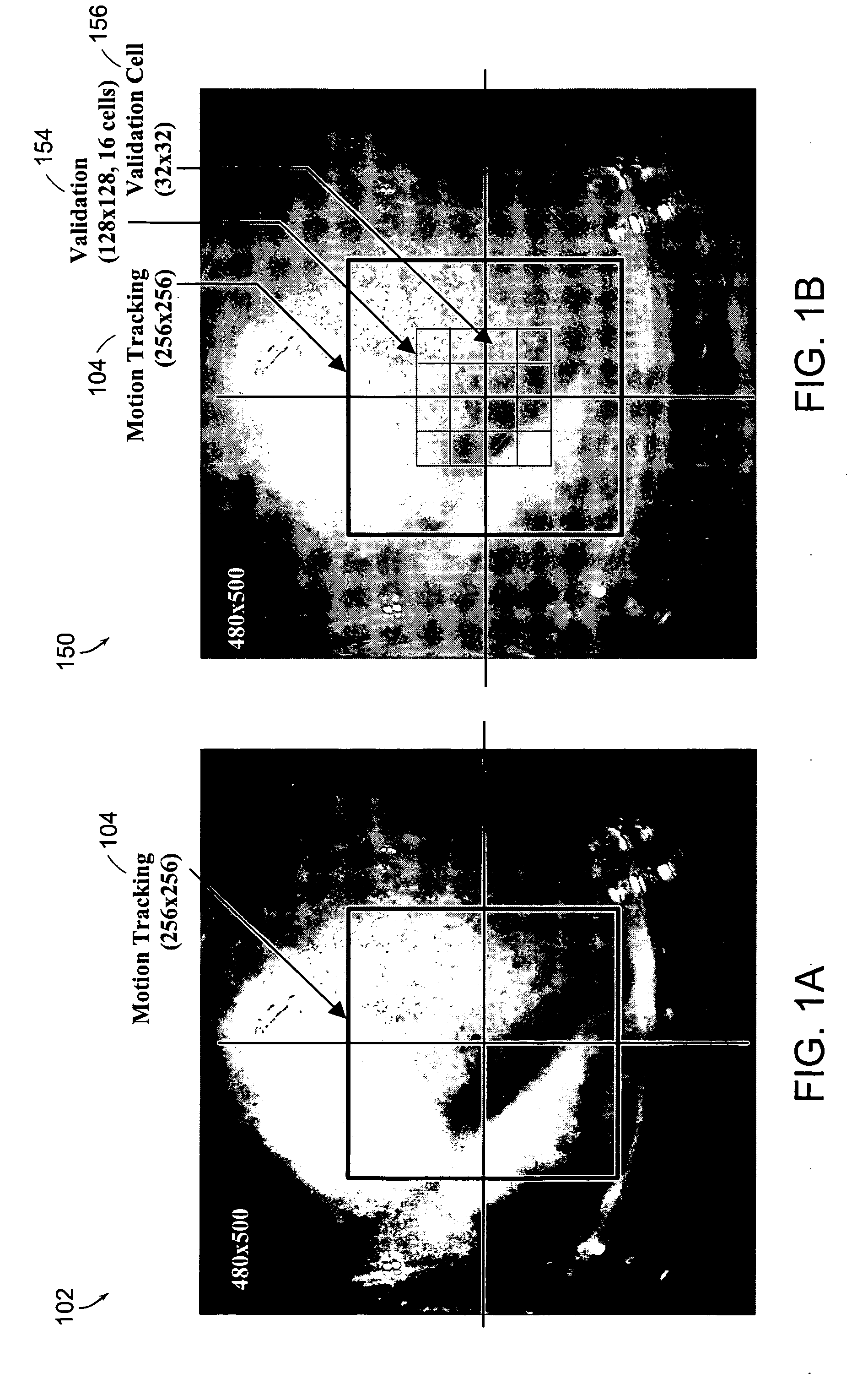Methods and systems for correcting image misalignment
a technology of image misalignment and method, applied in the field of image processing, can solve the problems of insufficient use of method to adequately correct image misalignment, inability to compensate for misalignment caused, and spatial shift of tissue within the image frame field, etc., to achieve the effect of improving optical diagnosis and assessmen
- Summary
- Abstract
- Description
- Claims
- Application Information
AI Technical Summary
Benefits of technology
Problems solved by technology
Method used
Image
Examples
Embodiment Construction
[0040] In general, the invention provides methods of determining a correction for a misalignment between images in a sequence due to movement of a sample. These methods are useful, for example, in the preparation of a sequence of images for analysis, as in medical diagnostics.
[0041] In some diagnostic procedures, methods of the invention comprise applying an agent to a tissue in order to change its optical properties in a way that is indicative of the physiological state of the tissue. The rate and manner in which the tissue changes are important in the characterization of the tissue.
[0042] Certain embodiments of the invention comprise automated and semi-automated analysis of diagnostic procedures that have traditionally required analysis by trained medical personnel. Diagnostic procedures which use automatic image-based tissue analysis provide results having increased sensitivity and / or specificity. See, e.g., co-owned U.S. patent application Ser. No. 10 / 099,881, filed Mar. 15, 2...
PUM
 Login to View More
Login to View More Abstract
Description
Claims
Application Information
 Login to View More
Login to View More - R&D
- Intellectual Property
- Life Sciences
- Materials
- Tech Scout
- Unparalleled Data Quality
- Higher Quality Content
- 60% Fewer Hallucinations
Browse by: Latest US Patents, China's latest patents, Technical Efficacy Thesaurus, Application Domain, Technology Topic, Popular Technical Reports.
© 2025 PatSnap. All rights reserved.Legal|Privacy policy|Modern Slavery Act Transparency Statement|Sitemap|About US| Contact US: help@patsnap.com



